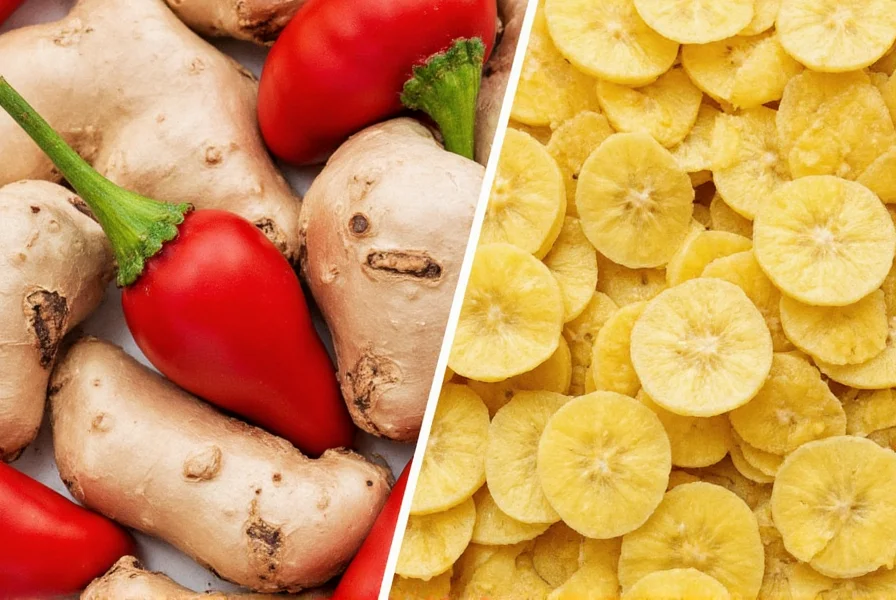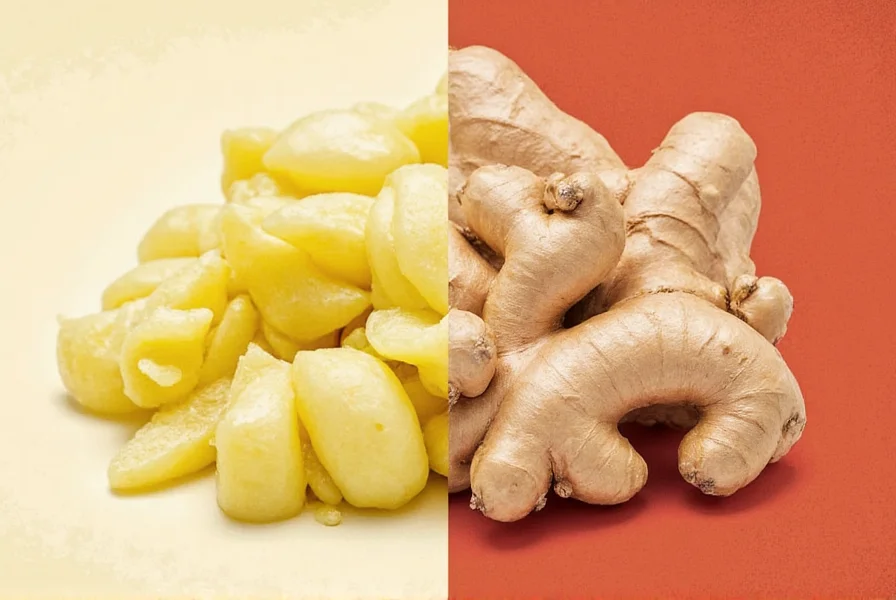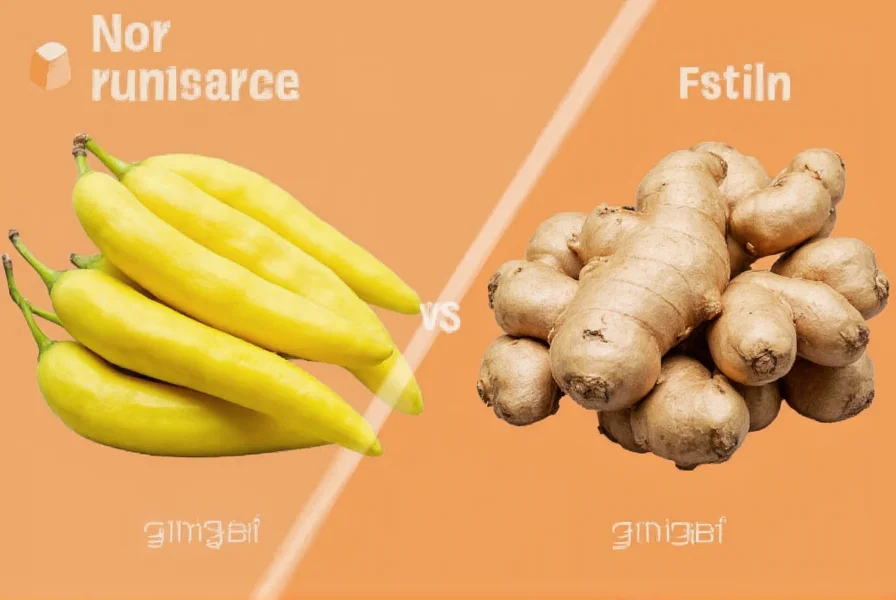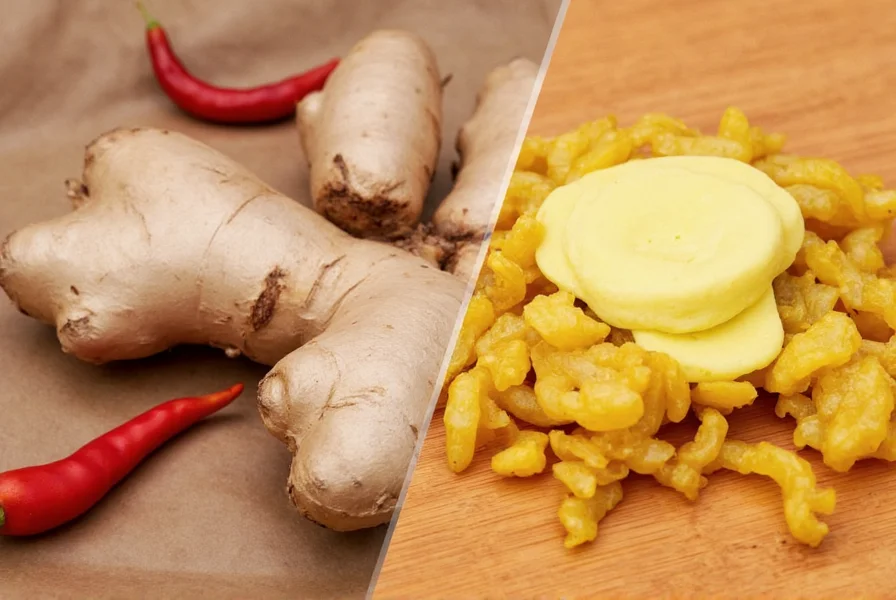If you're searching for the key differences between galangal and ginger, you've come to the right place. These two roots from the Zingiberaceae family may look similar, but their flavors, uses, and applications are distinctly different. Understanding when to use each can transform your cooking from ordinary to extraordinary.
This guide provides clear, actionable information about galangal versus ginger, including their flavor profiles, culinary applications, storage techniques, and substitution tips. Let's dive into the details that matter most to home cooks and chefs alike.
Key Differences Between Galangal and Ginger

| Feature | Galangal | Ginger |
|---|---|---|
| Appearance | Pale beige skin, firm texture | Tan/brown skin, soft and fibrous |
| Flavor | Sharp, citrusy, piney | Spicy, sweet, peppery |
| Texture | Hard, woody, less fibrous | Soft, moist, stringy |
| Common Uses | Thai curry pastes, soups, stews | Stir-fries, desserts, teas |
| Substitutes | Ginger + lemon zest or cardamom | Galangal + white pepper |
When to Use Galangal vs Ginger

Use Galangal When:
- Preparing Thai green or red curry
- Boiling coconut-based soups like Tom Kha Gai
- Need bold, sharp, herbal notes in your dish
- Grinding into authentic curry paste
Use Ginger When:
- Making baked goods like gingerbread or cookies
- Wanting a mellow heat with sweetness
- Preparing teas or smoothies for digestion
- Creating marinades or sauces with warm undertones
Buying and Storing Guide

Ginger Buying Tips:
- Smooth, tight skin without wrinkles or mold
- Firm to the touch — avoid soft or mushy roots
- Medium-sized rhizomes (larger ones can be fibrous)
Galangal Buying Tips:
- Bright beige or light brown color
- Firm, almost woody texture
- Avoid shriveled or overly dry pieces
Storage Tips:
- Ginger: Store unpeeled in a resealable plastic bag with a paper towel in the refrigerator's crisper drawer for 3-4 weeks. Freeze for longer storage (up to 6 months).
- Galangal: Wrap in paper towels and store in a sealed container in the refrigerator for 2-3 weeks. Freeze sliced pieces for up to 2 months.
Health Benefits

Ginger Health Benefits:
- Reduces inflammation and muscle soreness
- Eases nausea and morning sickness
- May lower blood sugar levels
Galangal Health Benefits:
- Antibacterial and antifungal properties
- Potential aphrodisiac effects (in traditional medicine)
- Supports digestion and immune function
Frequently Asked Questions
Can I substitute galangal for ginger in recipes?
Yes, but with important caveats. While they're both rhizomes from the same plant family, they have distinctly different flavor profiles. Galangal has a sharper, more citrusy, pine-like flavor compared to ginger's warm, spicy-sweet profile. For the closest approximation when substituting ginger for galangal, use fresh ginger with a pinch of lemon zest or a tiny bit of cardamom. When substituting galangal for ginger, add a touch of white pepper to mimic ginger's warmth.
Is galangal safe to eat raw?
Yes, galangal is safe to eat raw from a food safety perspective, but it's quite tough and fibrous, making it difficult to chew and digest in its raw form. Unlike ginger, which can be comfortably eaten raw in small amounts (like in sushi ginger), galangal is almost always cooked or finely grated/pounded in traditional recipes. Most Southeast Asian dishes use it sliced thinly for infusing flavor, then removing before serving.
Why is galangal sometimes called "Thai ginger" if it's botanically different from regular ginger?
Galangal is called "Thai ginger" primarily because of its similar appearance and shared plant family (Zingiberaceae), despite being a different genus (Alpinia vs Zingiber). In Western markets where galangal was less known, vendors used "Thai ginger" as a marketing term to help customers understand what it was. However, this nickname has caused confusion for decades, as the two spices have distinctly different flavors and uses. True ginger is Zingiber officinale, while the most common culinary galangal is Alpinia galanga (sometimes called "greater galangal").
Where can I find galangal if it's not available at my regular supermarket?
If your local grocery store doesn't carry fresh galangal, try these options:
- Asian specialty markets (particularly Thai, Indonesian, or Vietnamese grocery stores)
- Frozen food sections of larger supermarkets (sometimes sold in pre-sliced packages)
- Online spice retailers that specialize in international ingredients
- Some farmers' markets in areas with diverse populations
- As a last resort, dried galangal powder can be used (though it's significantly less flavorful than fresh)











 浙公网安备
33010002000092号
浙公网安备
33010002000092号 浙B2-20120091-4
浙B2-20120091-4